The Harvard Business Review recently shared some tips on how to use body language to convey confidence in presentations via Kasia Wezowski and other members of the Center for Body Language. Wezowski and her team study body language and microexpressions.
A few years ago, the team attended a startup pitch contest and watched both the contestants and judges closely. Their ability to forecast results was uncanny, as Wezowski explains below:
We gave our prediction of who would win before the winners were announced and, as we and the audience soon learned, we were spot on. We had spoiled the surprise.
What were Wezowski and her team looking for? They were watching out for telltale signs of confidence. Their results applied to political presentations as well. In Wezowski’s own words,
We evaluated each would-be entrepreneur on a scale from 0-15. People scored points for each sign of positive, confident body language, such as smiling, maintaining eye contact, and persuasive gesturing. They lost points for each negative signal, such as fidgeting, stiff hand movements, and averted eyes.
So, how can you apply this to your own presentations? The Center for Body Language team has described 6 techniques you can use to look more confident. For visuals and some incredibly useful detail, check out the original article here. 6 Ways to Look More Confident in Presentations
- The Box: Don’t use huge broad flinging hand gestures; keep your gestures neatly inside of an invisible “box” in front of you. This conveys that you are truthful and trustworthy.
- Holding the Ball: Act like you are holding an invisible basketball in front of you. This tells your audience that you are confident and in control.
- Pyramid Hands: Put your fingertips together to form your hands into a pyramid shape in front of you. This tells your audience that you are self-assured and relaxed. It is also a good way to prevent fidgeting.
- Wide Stance: When you stand firmly with your legs in a wide stand, it gives the impression that you are firmly rooted, confident, and feel in control.
- Palms Up: Gesture with your hands apart, palms up, to convey honesty and acceptance. This gives the impression that you are offering something and willing to connect sincerely with your audience.
- Palms Down: Adopting the same gesture but with your hands facing down has a strong and assertive effect that can also calm an audience. Think “simmer down” or “quiet down” hands.
This type of body language won’t turn you into a leader – it takes much more than body language. But it can certainly help anyone to achieve more positives outcomes when they are publicly speaking. Wezowski’s last piece of advice?
The next time you give a presentation, try to have it recorded, then review the video with the sound off, watching only your body language. How did you stand and gesture? Did you use any of these positions?¬† If not, think about how you might do so the next time you’re in front of an audience, or even just speaking to your boss or a big client. Practice in front of a mirror, then with friends, until they feel natural.
Practice, practice, practice! With these basic tips, you can go into your next presentation with a heightened awareness around how you use your body to communicate – and what you are intentionally or unintentionally saying to your audience.
At MeetingPulse, we believe in humble bosses, open communication, and cooperation. We provide easy-to-use interactive tools that support healthy corporate culture for employees and administration alike.
If you want to know more about your employees’ thoughts, ideas, and preferences, get more involved in organizational feedback by trying out our browser-based response system.
We provide real-time survey tools and online audience polling software via any device, so your audience will never need to download an app.
Contact us for more information about our browser-based response system or click on “Keep Me Posted” on our blog page to receive blog updates and our free e-book.











